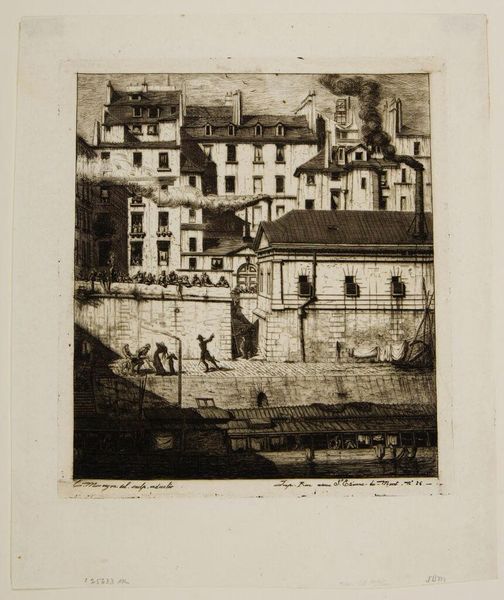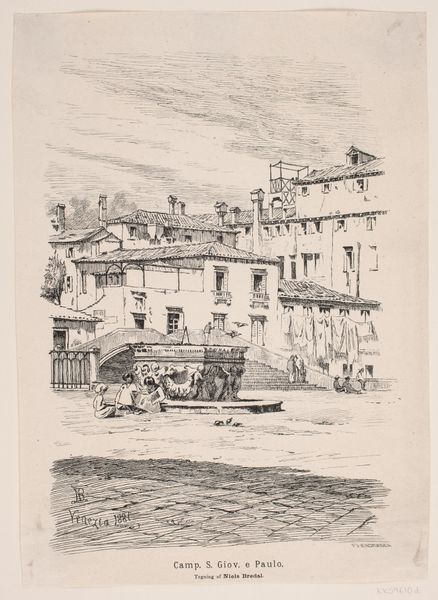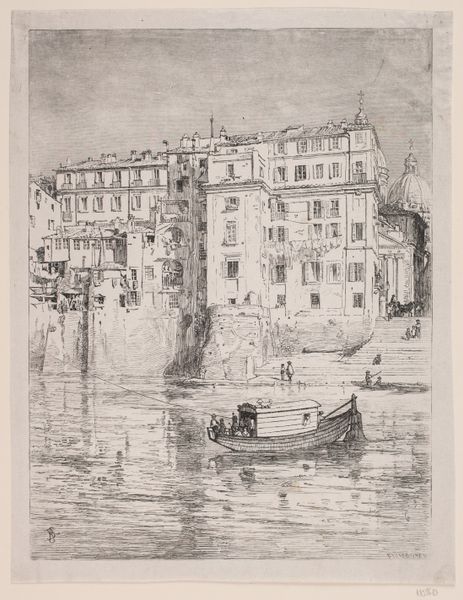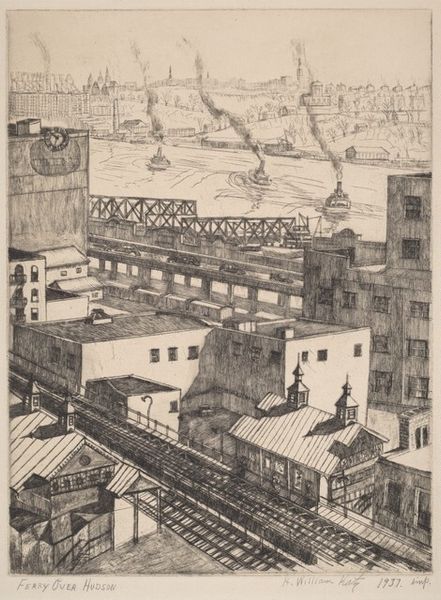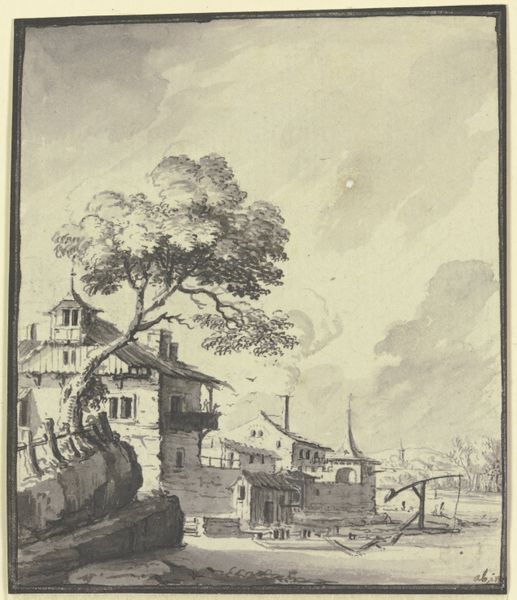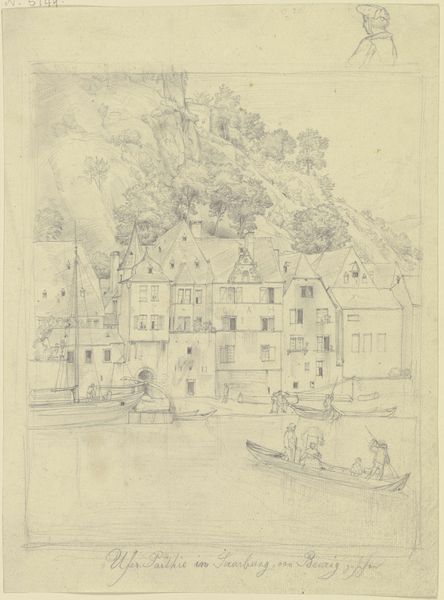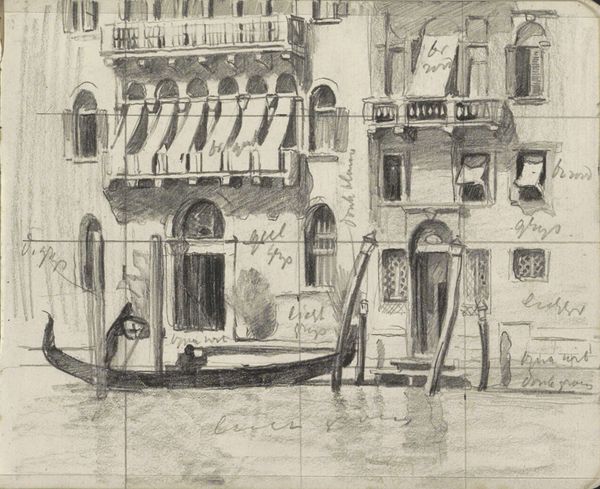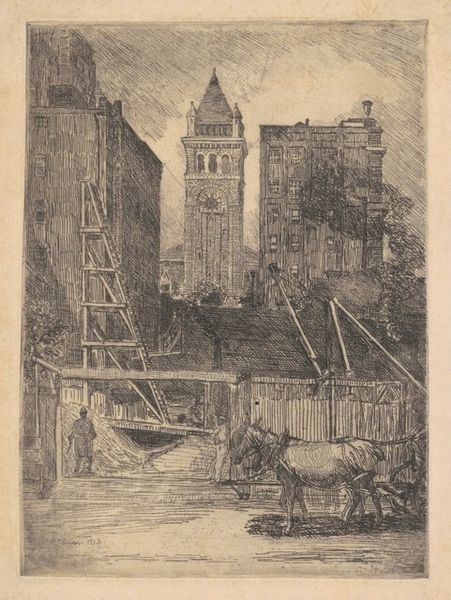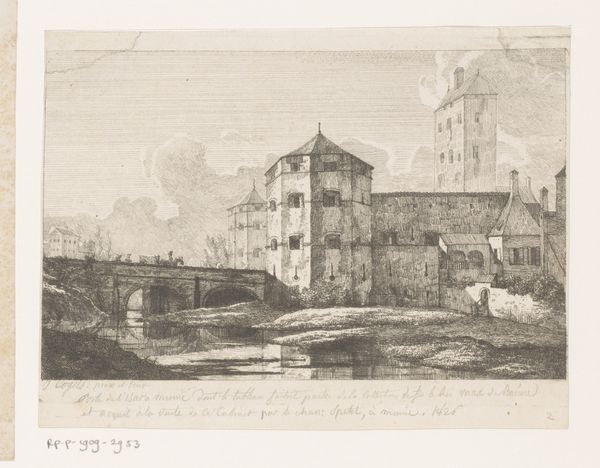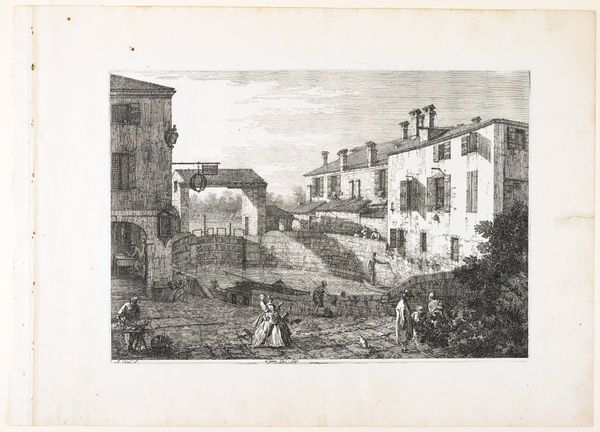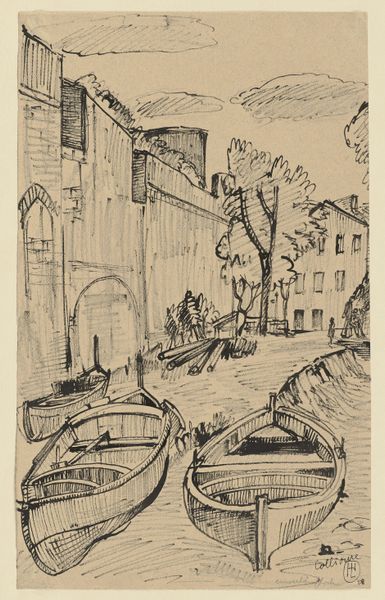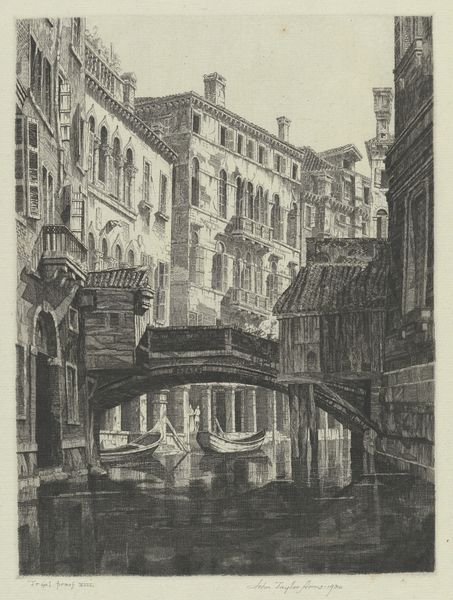
#
architectural sketch
#
aged paper
#
toned paper
#
mechanical pen drawing
# print
#
old engraving style
#
sketch book
#
etching
#
pen-ink sketch
#
pen work
#
watercolor
Dimensions: plate: 23.2 x 20.7 cm (9 1/8 x 8 1/8 in.) sheet: 25.4 x 24.3 cm (10 x 9 9/16 in.)
Copyright: National Gallery of Art: CC0 1.0
Curator: So, here we have Charles Meryon's "La Morgue, Paris" from 1854, a print etched with impressive detail. Editor: The sheer density of lines creating the textures of stone and water is striking. The mortuary itself seems rather imposing. What should we make of this depiction? Curator: Consider the process, the labor involved in creating such a detailed etching. Meryon's choice of subject matter, a mortuary, connects to the harsh realities of 19th-century Parisian life. The etching process itself, with its acid-biting into metal, mirrors, perhaps, the corrosive nature of poverty and death prevalent in the city. Do you notice how the architectural details are rendered with almost scientific precision? Editor: Yes, there’s a focus on documentation, almost like a police record. The gathering crowd looking over the walls adds another layer of meaning. Curator: Exactly. It speaks to the spectacle of death and the voyeuristic tendencies of urban life. How does the print's materiality – the paper, the ink – contribute to your understanding? Is it a precious object, or does its creation speak to broader, more democratic forms of art consumption? Editor: I see what you mean. Because it’s a print, it suggests wider circulation, bringing this stark depiction of Parisian life to a broader audience. It's not just about high art; it's about access. Curator: Precisely! Meryon isn't just showing us a building; he's showing us the social fabric, the means of representation, and the role art plays in it. Think of the copper plate, the etcher’s workshop, and the print shop – these all become part of the artwork's story. Editor: I never really considered that before. Viewing it through a materialist lens, it is less about the tragic scene depicted and more about the processes of how such a scene came to be depicted and distributed. Curator: It reframes how we engage with the artwork, doesn't it? Seeing beyond the immediate image to its creation and its journey through society. Editor: Absolutely, it gives me a new perspective on the layers of meaning embedded within this seemingly straightforward image.
Comments
No comments
Be the first to comment and join the conversation on the ultimate creative platform.

